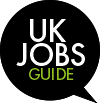Hygienist
Oral hygiene is the practice of keeping the mouth and teeth clean to prevent dental problems, most commonly, dental cavities, gingivitis, and bad breath.
There are also oral pathologic conditions in which good oral hygiene is required for healing and regeneration of the oral tissues.
These conditions included gingivitis, periodontitis, and dental trauma and following wisdom tooth extraction.
Cleaning
Cleaning of teeth
Teeth cleaning is the removal of dental plaque and tartar from teeth to prevent cavities, gingivitis, and gum disease. Severe gum disease causes at least one-third of adult tooth loss.
Tooth decay is the most common global disease affecting every family. Over 80% of cavities occur inside pits and fissures on chewing surfaces where brushing cannot reach food left trapped after every meal or snack, and saliva or fluoride have no access to neutralise acid and remineralise demineralised teeth, unlike easy-to-reach surfaces, where fewer cavities occur.
Dental sealants, which are applied by dentists, cover and protect fissures and grooves in the chewing surfaces of back teeth, preventing food from becoming trapped thus halting the decaying process.
Since before recorded history, a variety of oral hygiene measures have been used for teeth cleaning. This has been verified by various excavations done throughout the world, in which chew sticks, tree twigs, bird feathers, animal bones and porcupine quills were recovered.
Generally, dentists recommend that teeth be cleaned professionally at least twice per year. Professional cleaning includes tooth scaling, tooth polishing.
Between cleanings by a dental hygienist, good oral hygiene is essential for preventing tartar build-up which causes the problems mentioned above. This is done through careful, frequent brushing with a toothbrush, combined with the use of dental floss to prevent accumulation of plaque on the teeth.
Removing plaque
Plaque is a yellow sticky film that forms on the teeth and gums and can be seen at gum margins of teeth with a food dye. The bacteria in plaque convert carbohydrates in food (such as sugar) into acid that demineralises teeth, eventually causing cavities. Daily brushing and flossing removes plaque and can prevent tartar from forming on the teeth.
Plaque can also cause gum irritation (gingivitis), making them red, tender and cause them to bleed. In some cases, the gums pull away from the teeth (receding gums), leaving cavities inhabited by bacteria and pus. If this is not treated, bones around the teeth can be destroyed.
Flossing
The use of dental floss is an important element of oral hygiene, since it removes plaque and decaying food remaining stuck between the teeth. This food decay and plaque cause irritation to the gums, allowing the gum tissue to bleed more easily. Acidic foods left on the teeth can also demineralise teeth, eventually causing cavities.
Flossing for a proper inter-dental cleaning is recommended at least once per day, preferably before brushing so fluoride toothpaste has better access between teeth to help remineralise teeth,
It is recommended to use enough floss to enable easy use, usually ten or more inches with three to four inches of taut floss to put between teeth. Floss is then wrapped around the middle finger and/or index finger, and supported with the thumb on each hand. It is then held tightly to make taut, and then gently moved up and down between each tooth. It is important to floss under visible areas by curving the floss around each tooth instead of moving up and down on gums, which are much more sensitive than teeth. However, bleeding gums are normal upon first usage of floss, and will harden with use. One should use an unused section of the floss when moving around different teeth. Removing floss from between teeth requires using the same back-and-forth motion as flossing, but gently bringing the floss up and out of gaps between teeth.
Interdental brushes
An interdental brush, also called an interproximal brush or a proxy brush, is a small brush, typically disposable, either supplied with a reusable angled plastic handle or an integral handle, used for cleaning between teeth and between the wire of dental braces and the teeth. Brushes are available in a range of widths.
Tongue cleaning
It removes the white/yellow bad-breath-generating coating of bacteria, decaying food particles, fungi (such as Candida), and dead cells from the dorsal area of the tongue. Tongue cleaning also removes some of the bacteria species which generate tooth decay and gum problems.
Oral irrigation
Some dental professionals recommend oral irrigation as a way to clean teeth and gums.
Oral irrigators reach 3–4 mm under the gum line. Oral irrigators use a pressured, directed stream of water to disrupt plaque and bacteria.


